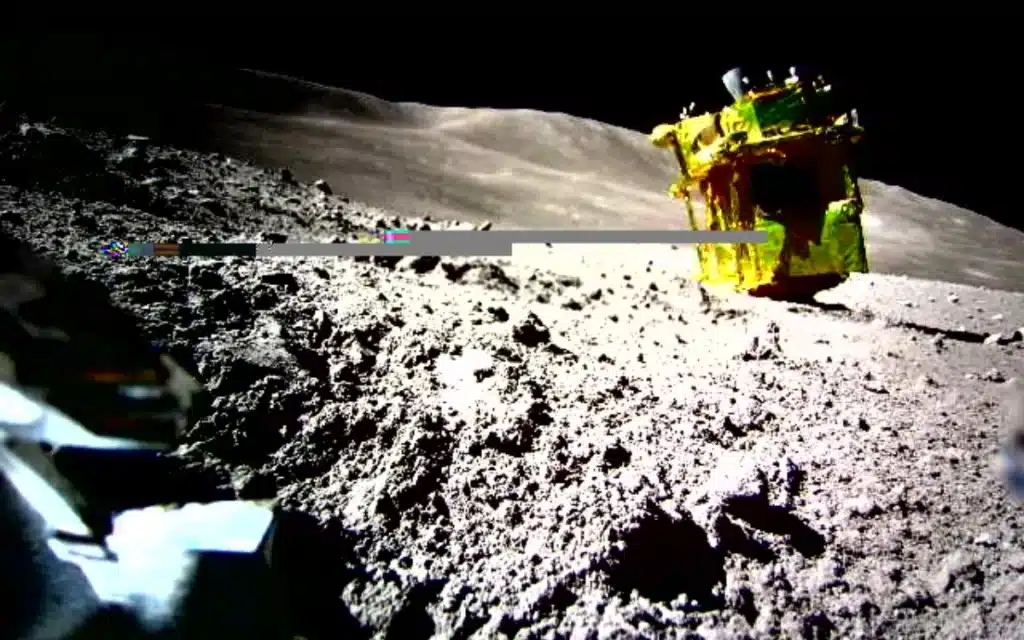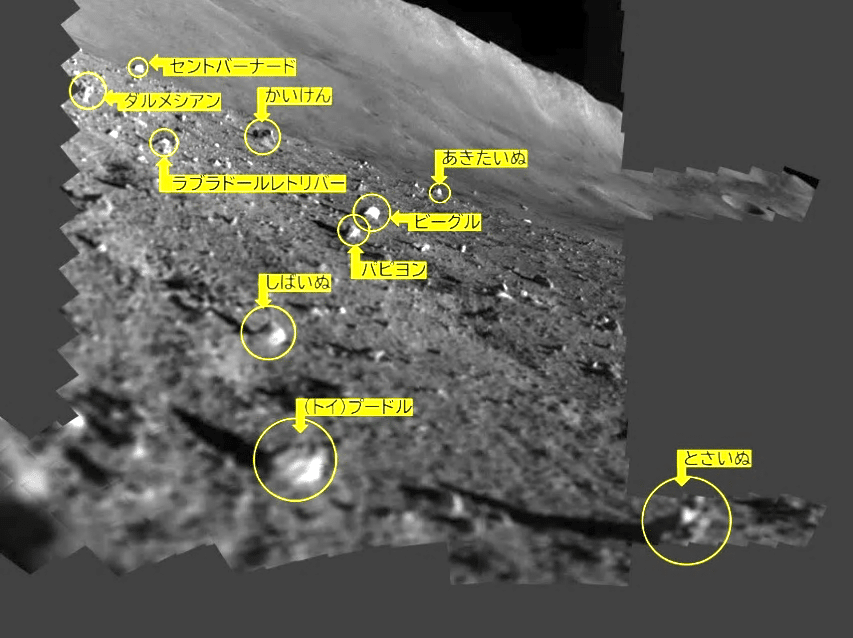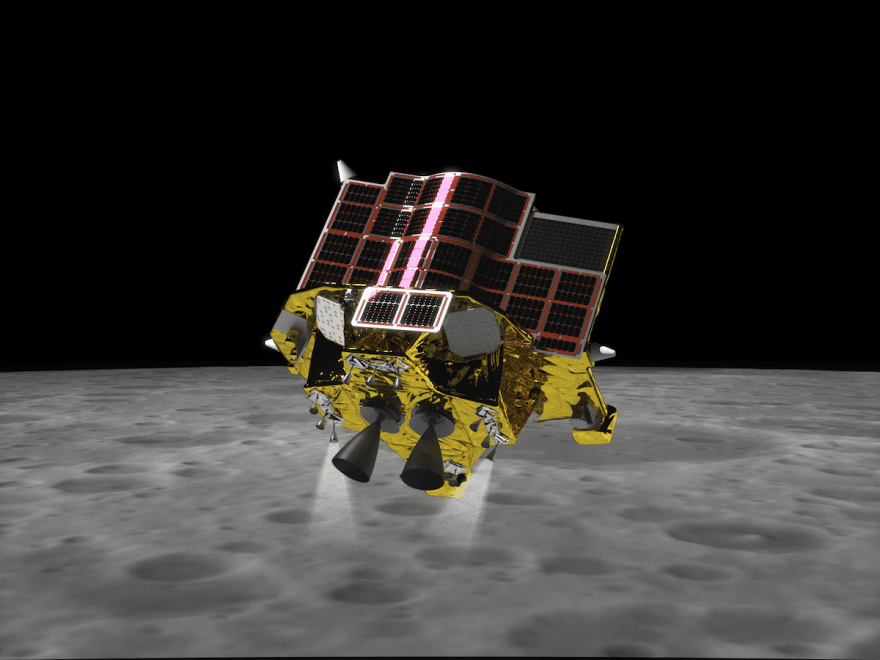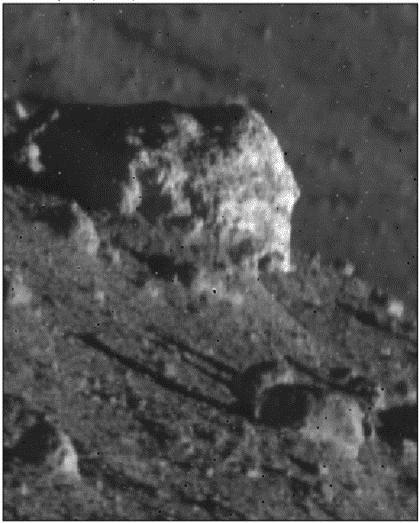Japan’s Moon lander takes one last photo in space before its end
- Japan’s Moon lander accidentally landed upside down on the near side of the Moon
- Because SLIM’s solar panels weren’t pointing in the right direction, the lander was unable to generate power, and was shut down on January 20 to conserve energy
- Nine days later SLIM roused from its slumber just in time to take one last photo of its surrounding before the deep-freeze of night
Published on Feb 05, 2024 at 4:41 PM (UTC+4)
by Adam Gray
Last updated on Feb 07, 2024 at 6:28 PM (UTC+4)
Edited by
Alessandro Renesis
It looks like it’s the end of the road for Japan’s Moon lander.
The SLIM spacecraft, short for Smart Lander for Investigation the Moon, accidentally landed upside down on the near side of the Moon.
But before the deep-freeze of night, the robotic spacecraft managed to snap one last photo of its surroundings.

READ MORE! NASA and SpaceX combining to build first Moon base
The image, taken with an onboard camera on February 1, shows ominous shadows cast upon a slope of the Shioli crater.
The Japan Aerospace Exploration Agency – NASA’s Japanese counterpart known as JAXA – released the image three days after re-establishing contact with the Moon lander.
After the trailblazing spacecraft landed upside down, the team had to shut it down to conserve energy.
Because its solar panels weren’t pointing in the right direction, the Moon lander was unable to generate power.
Last night (1/31 ~ 2/1) we sent a command to switch on #SLIM’s communicator again just in case, but with no response, we confirmed SLIM had entered a dormant state. This is the last scene of the Moon taken by SLIM before dusk. #GoodAfterMoon #JAXA pic.twitter.com/V1iAUoxJFK
— 小型月着陸実証機SLIM (@SLIM_JAXA) February 1, 2024
But mission controllers back here on Earth never gave up hope the sun’s angle would change eventually, which would allow them to reboot the lander.
They got their wish nine days later, rousing SLIM from its sleep, in time for the spacecraft to analyze rocks around the crater with its multi-band spectral camera.
The special camera completed its planned observation, able to study more targets than originally expected, according to a news release from the space agency translated to English.
“Based on the large amount of data we have obtained, we are proceeding with (analyses) to identify rocks and estimate the chemical composition of minerals, which will help solve the mystery of the origin of the Moon,” JAXA said in a statement.

Obviously, the Moon lander landing on its head wasn’t part of the plan, but the JAXA team said the mission accomplished its primary goal of a “pinpoint landing” – that is, one with an accuracy of less than 100 meters, or around 100 yards.
According to space agency officials, the lander was at most 10 meters off its mark, which is comparable to 11 yards or less.
But the Moon pander has now entered a dormant state, which has been promoted by nightfall on the Moon.
As one rotation of the Moon is that of about 27 Earth days, the so-called “lunar night,” when the Moon is no longer receiving sunlight, last around two weeks.


However, not much is able to survive the -270 degree Fahrenheit brought on by the darkness – not even robots.
Apparently, in this freezing temperature soldered joints on hardware and mechanical parts break, and batteries die.
When the sun rises again, the JAXA team will try to communicate with the Moon lander from mid-February, when the Sun will shine again on SLIM’s solar cells.
In other news, scientists have sent a message to nearby planets hoping for a response.
DISCOVER SBX CARS: The global premium car auction platform powered by Supercar Blondie

Adam Gray is an experienced freelance motoring journalist and content creator based in the United Kingdom. Using his media accreditation with manufacturers’ press offices, Adam test drives the latest cars and attends new vehicle press launches, producing written reviews and news pieces for a variety of lifestyle and business publications. Here at Supercar Blondie, Adam applies his journalistic skills penning social-first content around current news and trends. When he’s not behind the wheel of the latest car or writing up another viral story, Adam can be found at his local rink playing ice hockey or at the Riverside Stadium supporting his beloved Middlesbrough FC.




